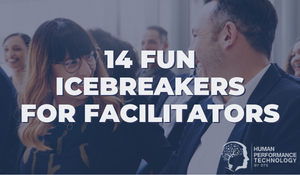In a Nutshell: Active Listening
The origins of Active Listening, also called Reflective Listening, can be traced back to Carl Rogers, one of the founders of the humanistic psychology movement and a highly influential figure in therapy and counselling.
The term “Active Listening” was coined in a 1957 article by Carl Rogers and Dr. Richard Farson, and was further popularised by Dr. Thomas Gordon of Gordon Training International.
Active Listening is used in a variety of settings including therapy, marriage counselling, conflict resolution, teaching, tutoring, journalism, consulting, negotiation, sales, business communication, customer service training, leadership and management.
Overview:
According to Gordon Training International, “Active listening is an empathic way of reflecting back both the words and feelings the person has expressed to see if you have understood correctly.”
As the name suggests, active listening is paying full attention to the speaker (content as well as emotional tone, body language and implicit meaning) rather than just passively hearing the words.
There are in fact a number of different interpretations of active listening. The original concept, as first outlined by Rogers and Farson, was centred on understanding the client’s feelings and point of view by stepping into his world (i.e., relating with more empathy). In some cases though, the term active listening has become synonymous with “paraphrasing” (i.e., clarifying the message in one’s own words to ensure both parties are “on the same wavelength,” and not necessarily being more empathetic towards someone as another human being).
Author of “The 7 Habits of Highly Effective People,” Stephen Covey, drew a clear distinction between active listening and “empathetic listening.” When outlining habit #5 (“Seek First to Understand, Then to Be Understood”) Covey states: “When I say empathic listening, I am not referring to the techniques of ‘active’ listening or ‘reflective’ listening, which basically involve mimicking what another person says.”
Covey and others (including Businessballs.com) have taken the view that active listening is limited and at a lower level than empathetic listening. The main difference is that active listening does not go far enough to really understand things from the other person’s perspective — to their satisfaction. Active listening is seen as a more rational/analytical process of understanding, which might be used as some NLP techniques have gained a reputation: by those looking to expedite the trust-building process without genuine compassion.
Others may disagree. Reading the original article by Rogers and Farson, it is quite clear that empathy, compassion, respect, sincerity and even personal vulnerability are at the heart of the practice. The authors even expressly stated that “merely parroting the words of another does not prove that one has understood but only that he has heard the words… A good rule of thumb is to assume that you never really understand until you can communicate this understanding to the other’s satisfaction.”
However, like so many business frameworks that become victims of their own success, the meaning and packaging can — and does — get changed, simplified and remoulded over time as it is taught to others en masse.
Some authors define active listening and empathetic listening as the same thing; others may take offence at this view. Since there is no “official” version of active listening, you will find several definitions, approaches and types of questions available (there are certainly more similarities than differences between approaches).
As a facilitator using this technique, some of the key points often highlighted are:
- Focus complete attention on the speaker
- Allow the speaker to finish… don’t jump in to agree or disagree
- Remain neutral and non-judgemental
- Ask the speaker to elaborate where necessary e.g., “Tell me more about… ”
- Reflect back the feeling e.g., “Would you say it’s correct to say you felt…”
When a person sees you genuinely trying to understand things more clearly from his perspective without fear of criticism or judgement, the expression of empathy often encourages him to share more and open up (the idea being that when people see you care about them, they will care more about you).
How effectively the technique is used will ultimately depend on how much practice the listener has had. Like many skills, active listening can sound extremely simple at first, but doing it well in practice is notoriously difficult.

Theo Winter
Client Services Manager, Writer & Researcher. Theo is one of the youngest professionals in the world to earn an accreditation in TTI Success Insight's suite of psychometric assessments. For more than a decade, he worked with hundreds of HR, L&D and OD professionals and consultants to improve engagement, performance and emotional intelligence of leaders and their teams. He authored the book "40 Must-Know Business Models for People Leaders."


/the%20best%20icebreaker%20for%20l%26D%20Facilitators%20(animal%20personalities).png?width=374&name=the%20best%20icebreaker%20for%20l%26D%20Facilitators%20(animal%20personalities).png)
We Would Like to Hear From You (0 Comments)